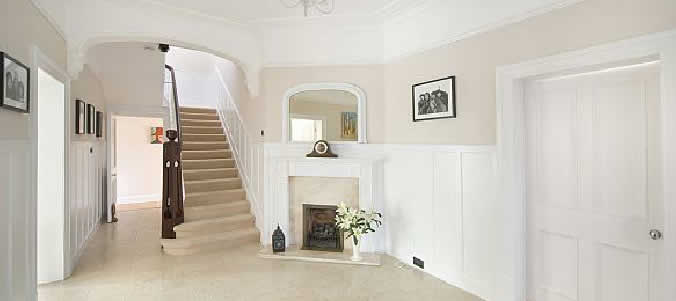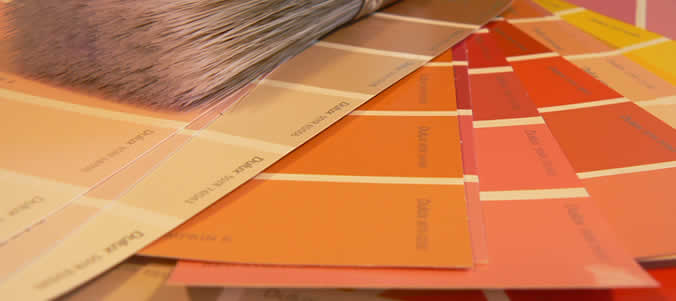Tile Work
It takes a lot of bravery to do the work of tiling in a home. Just a small mistake in the beginning stages can become larger later on and you have to start all over again! You also have to watch out for other problems like not prising off old tiles and repainting walls, not tiling over wallpaper – it’s a big task.
That is why it makes sense to employ James the decorator to install tiles. Our services are professional and our rates are cheap. We have years of experience setting up all sorts of colourful tile combinations in every kind of home!
On a positive note, tiling can really lift interior designs. It’s a robust method for decoration and offers a multitude of creative options. If you want to try yourself, complete a smaller task first such as the back surround of a sink. You’ll find that tiles come in a variety of colours, shapes and sizes. Mix up cheaper types with expensive tiles to get a classic effect. Don’t think squares are the only shape either. Look at options for layering-on metal sheets or wood, or chips of stone. Basic rules, as per painting, apply: vertical stripes make a room higher and horizontal lines give the illusion of larger space.
Here are some popular tiles for you to consider:-
Choose your shapes
Rectangle/square – commonly know but perhaps opt for a different look by arranging interchangeable colours or in a diamond shape. Also bear in mind that sizes can differ, from little mosaic chips to 30 cm x 30 cm larger forms.
Border tiles – Lift up plain tiles by introducing some colourful border tiles in the middle or end of a run.
Random shapes – Putting in a hexagonal shape or similar can really create a different look but plan in advance! On graph paper if possible.
Textured or smooth?
Mosaic – Artistically intriguing with all kinds of creative possibilities. Mosaics can be placed over a whole wall or next to plain tiles, to jazz them up. What’s great too is that suppliers provide these tiles in glued mesh squares (30 cm by 30 cm), which makes them easier to put on a wall.
Terra-cottar – A relaxed style, which suits informal interior designs. You need a sealant for them to be stain resistant and waterproof.
Glazed/un-glazed ceramic – A refreshing texture, which is un-glazed so (as above) a sealant is needed to be stain resistant and waterproof.
Relief – Ceramic tiles with a raised pattern under a glaze. It makes the tone and texture compelling and they are a top choice for borders.
Pictorial and patterned – Good for an intimate effect with various assortments available. if you mix these tiles with plainer styles it becomes more cost effective.
Mirror – Really enlarges the sense of spaciousness, creating a perfect illusion! Self-adhesive backing is often on the back to make installation easier. Use mirror tiles on flat walls or there will be an over-the-top wonky effect!
Vitreous glass – Perfect for reflections depending on where they are placed inside the home and access given to light. These tiles can break up spaces but don’t get in the way of natural light. Subtle and superb!
Metallic – Great for the respectable, smart feel. They are cheaper than metal cladding. Metallic gives a reflective sparkler when installed.
Preparation and Planning
Tile work needs both preparation and focus on small details. Firstly, count how many tiles are needed. If you have standard square tiles, divide the width of the wall by the width of a tile to get the number of tiles in a row. Replicate this for the height and area to be covered to get the number of tiles in a column. Multiply both figures together and you’ll estimate the final amount of tiles required for the job. Do add an extra 10 per cent to allow for breakages, etc. And buy all the tiles needed in one go or you might have to return to the shop to find your tile design is no longer available. Fashions change quickly!
A tiling gauge is ideal to position the tiles. In fact, a gauge is relatively easy to create at home. Just take a 1.2 x 50 mm x 25 mm wooden batten and map the tiles with a pen. Tip: leave room in your estimations for the grouting space. The wall needs to be cleaned with plaster left dry and fresh. Existing paintwork needs to be keyed to help the tiles stick to the wall and do get rid of old wallpaper.
Map the plan properly before tiling. Begin from a natural central point on the wall. Measure the horizontal rows using a wooden batten and carpenter’s level. Make sure the rows are in line and be sure there is no conflict with the finishing line. Supportive battens should be nailed with masonry nails to help hold the tiles while the glue is drying.
Always use the manufacturer’s tile glue and follow the instructions. As a general rule start where the column and row battens meet, in a corner. Put on the glue just 1 sq at a time and use a notch spreader. Ideally, the glue must have natural grooves and be 3 mm thick. Press the first tile solidly onto the glue, ensuring it is in the correct position between battens. A carpenter’s level and spacer will make the work easier and keep it measured properly. A small cut of tile is ideal for filling any gaps on the outside edge. Tilt the back-to-front tile at the edge and mark with a pen and then use that for a cutting guide. You can turn inside corners by placing the small tiling space at the rear. Full tiles will be needed for outsider corners, at right angles.
Grout can be used to fill in tile gaps, with the help of a handy plastic scraper. Do it only when the glue on the rear of the tile is dry and stuck fast to the wall. A damp cloth is ideal for excess liquid. .
Tip: Apply a tile cutter to create a mark on the rear of a loose tile, when you want to cut then. Break it with score-and-snap pliers and utilise the marking gauge on a cutting jig to set the gap widths needing to be cut.
This is basic advice – if you’re concerned, help is at hand! James the decorator has successfully completed many tiling projects to suit the interior design plans of homeowners. Get in touch with us today and we can talk through the options.
Tiling services in Tonbridge, Tunbridge wells Paddock Woods, Pembury and throughout the South West.

